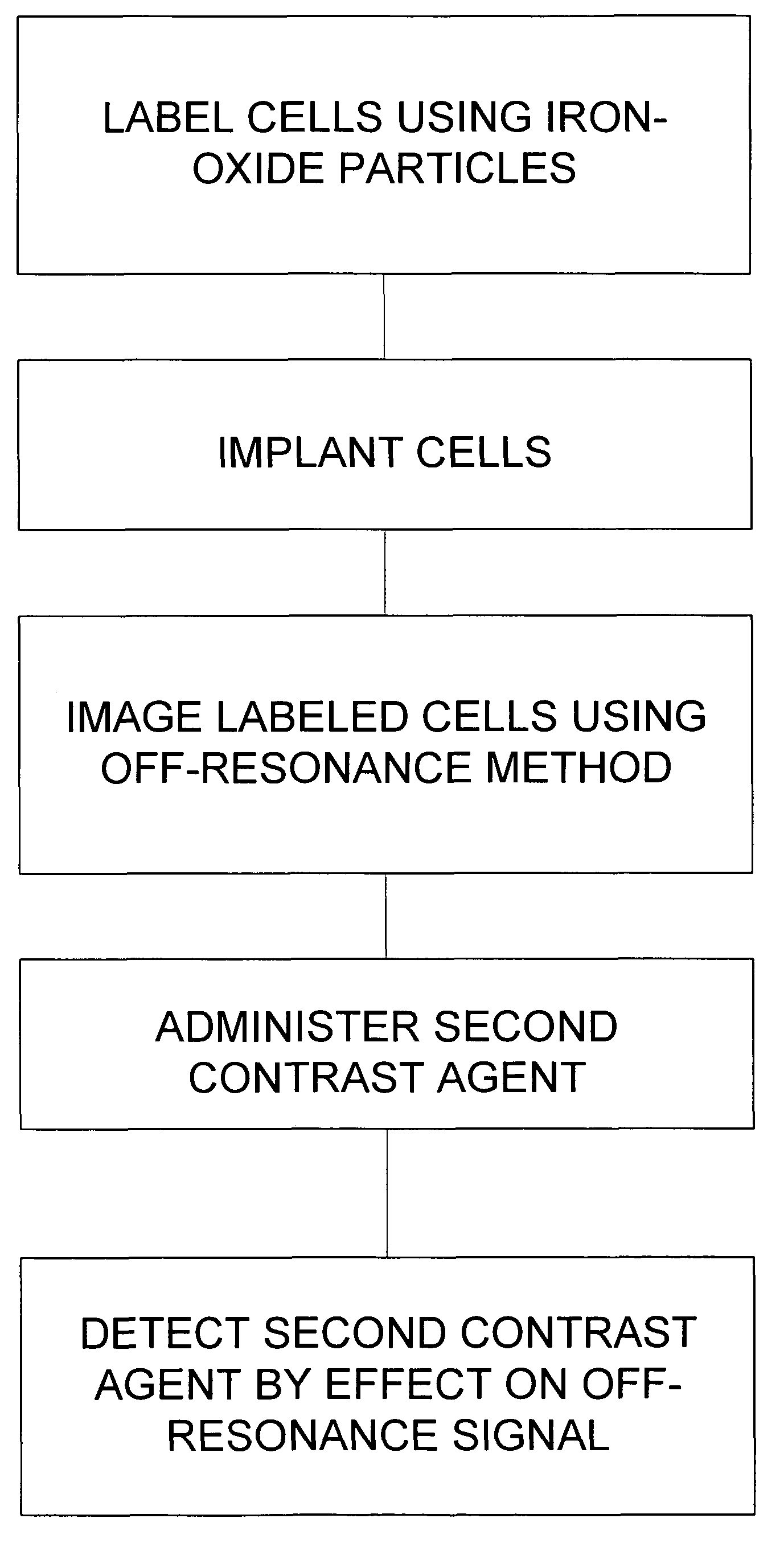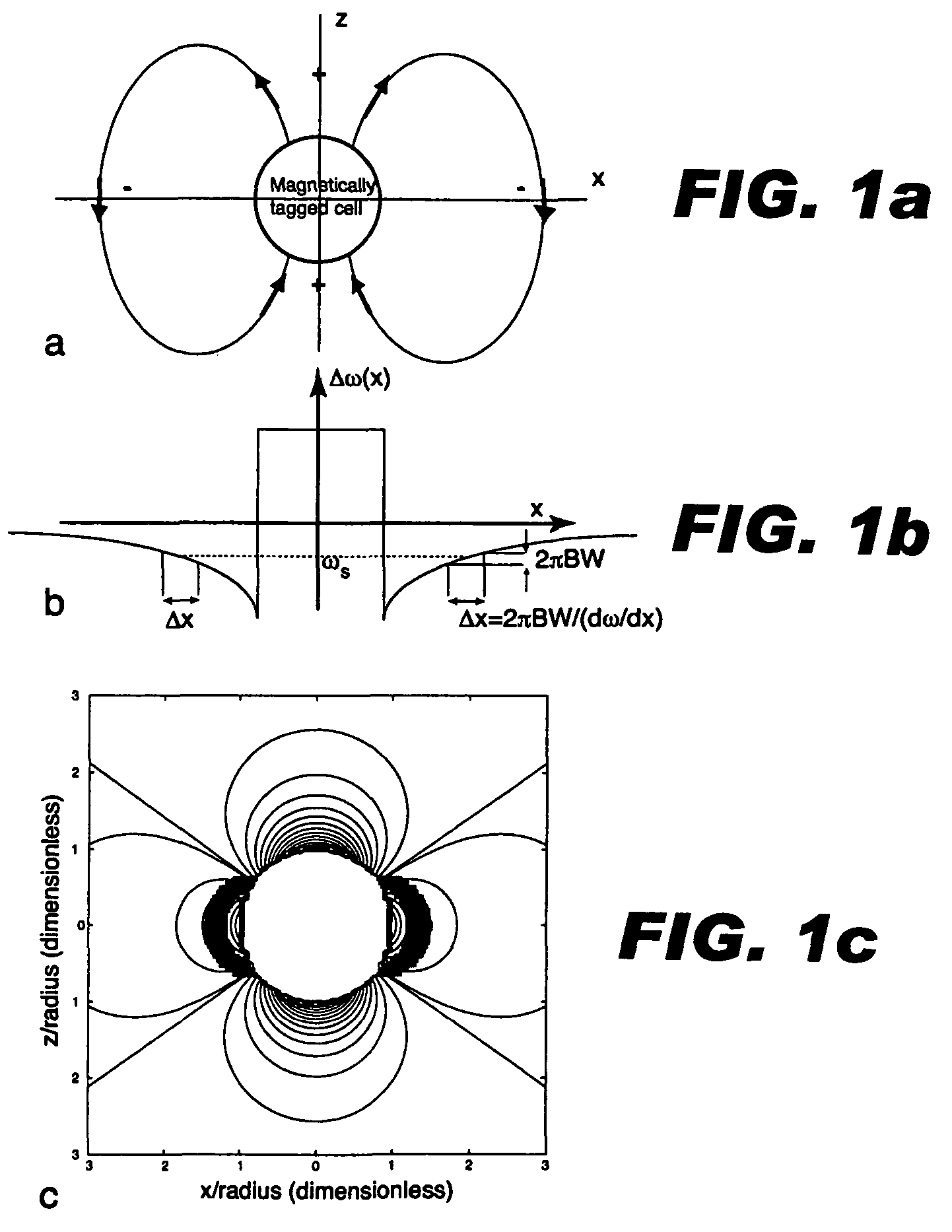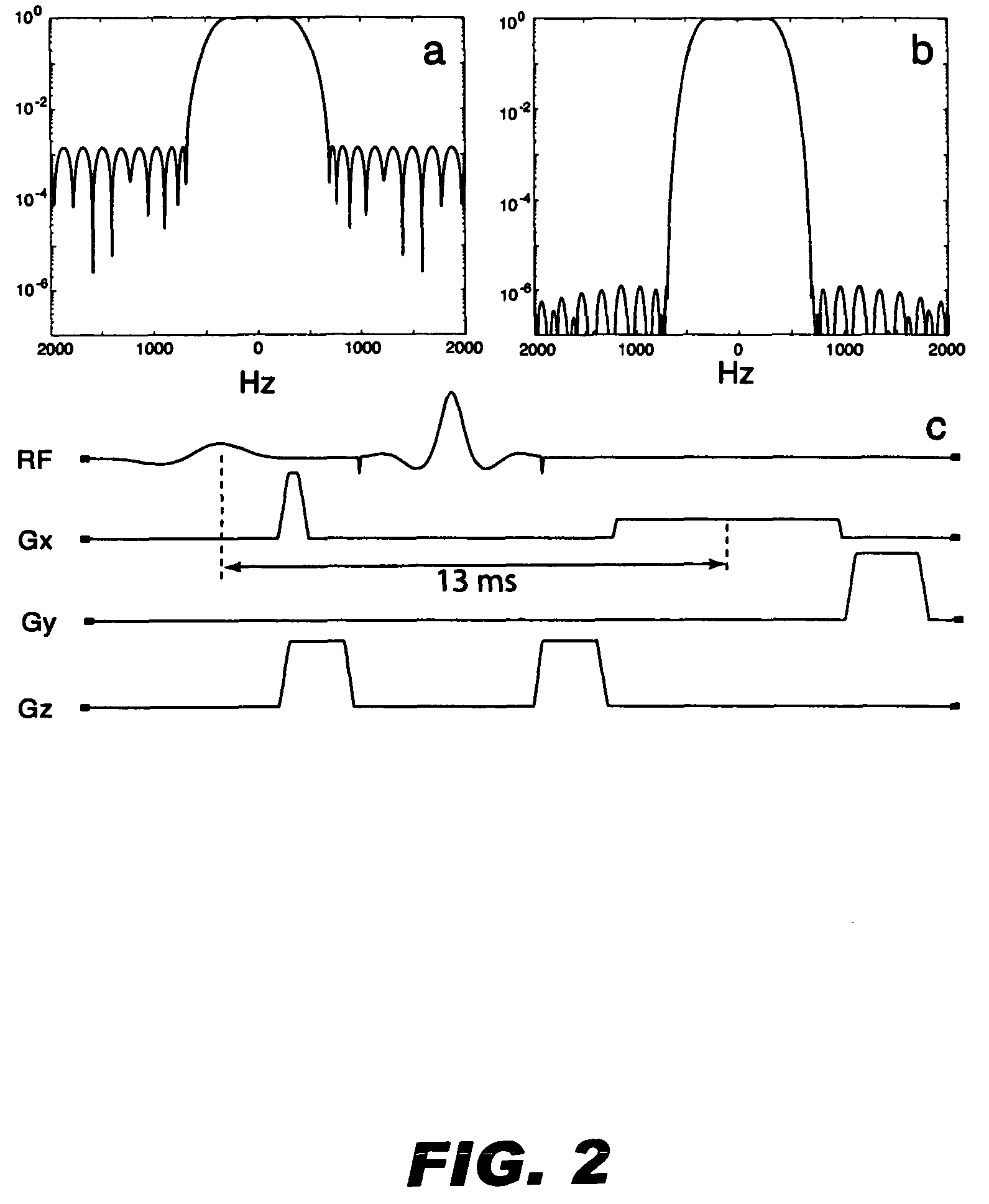Method of off-resonance detection using complementary MR contrast agents
a contrast agent and off-resonance detection technology, applied in the field of magnetic resonance imaging (mri), can solve the problems of significant signal dephasing, agent cannot be distinguished from a void in the image, and negative contrast agents suffer from partial volume effects
- Summary
- Abstract
- Description
- Claims
- Application Information
AI Technical Summary
Problems solved by technology
Method used
Image
Examples
Embodiment Construction
[0015]As described in U.S. Pat. No. 7,502,640, supra, a collection of labeled cells will cast a field pattern in the water molecules immediately surrounding the cells. The field pattern can be approximated by a dipole field from a magnetized sphere. The dipole pattern demonstrates a classic field cross pattern, in which the local Bz field is enhanced in the north and south poles and suppressed along the equator. The polarity of the field perturbation would be reversed for a diamagnetic agent. The dipole field pattern intensity falls off quickly. The field perturbation varies as
[0016]ΔBz(r,θ)=ΔχBO3(ar)3(3cos2θ-1)(1)
where Δχ is the difference in bulk magnetic susceptibility between the sphere and surroundings, α is the radius of the sphere, r is the distance from the sphere center, and θ is the angle relative to the main field, Bo. Hence, the field pattern from a smaller collection of cells will fall off more steeply than that from a larger collection. In practice, agglomer...
PUM
 Login to View More
Login to View More Abstract
Description
Claims
Application Information
 Login to View More
Login to View More - R&D
- Intellectual Property
- Life Sciences
- Materials
- Tech Scout
- Unparalleled Data Quality
- Higher Quality Content
- 60% Fewer Hallucinations
Browse by: Latest US Patents, China's latest patents, Technical Efficacy Thesaurus, Application Domain, Technology Topic, Popular Technical Reports.
© 2025 PatSnap. All rights reserved.Legal|Privacy policy|Modern Slavery Act Transparency Statement|Sitemap|About US| Contact US: help@patsnap.com



